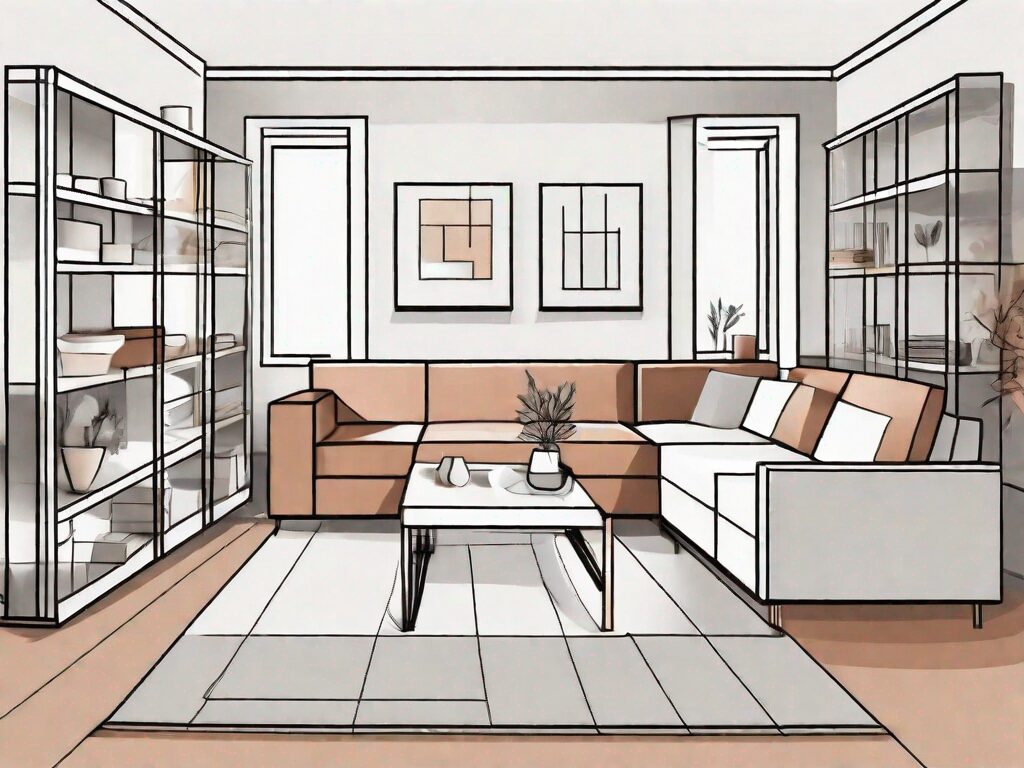
Agent A-Team or Solo Superhero? Finding the Right Real Estate Partner for Your Selling Journey in Wildwood Florida
When it comes to selling your home in Wildwood, Florida,…
January 29, 2024
Moving to a smaller home can be a daunting task. The thought of decluttering and downsizing can feel overwhelming, but with the right approach, it can be a rewarding and organized process. In this ultimate guide, we will walk you through each step of downsizing your home, from nailing down your destination details to settling into your new space with ease.
The first step in downsizing your home is to determine where you will be moving to. Whether it’s a smaller house, an apartment, or a retirement community, it’s crucial to have a clear understanding of your new living arrangements. Consider the size, layout, and storage options available in your new space.
When it comes to choosing your new home, there are several factors to consider. Think about the location and proximity to amenities such as grocery stores, medical facilities, and recreational activities. Is it important for you to be close to family and friends? Are you looking for a quiet neighborhood or a bustling city environment? Take the time to research different areas and visit potential neighborhoods to get a feel for the atmosphere and community.
Once you have identified your ideal destination, it’s time to delve deeper into the specifics. Think about the size of the new space and how it will accommodate your belongings. Consider the layout and flow of the rooms, envisioning how you will arrange your furniture and personal items. Take note of the storage options available, such as closets, cabinets, and built-in shelving. This will help you determine what items you can bring with you and what may need to be sold, donated, or discarded.
Additionally, think about the amenities and services offered in your new living arrangement. Are there on-site fitness facilities, community centers, or social activities? Will you have access to outdoor spaces such as gardens, parks, or walking trails? These factors can greatly enhance your quality of life and contribute to a fulfilling retirement experience.
Furthermore, consider the financial implications of your new destination. Research the cost of living in the area, including housing expenses, utilities, and property taxes. Take into account any additional fees or monthly charges associated with your new living arrangement, such as maintenance fees or community dues. It’s important to have a clear understanding of your budget and how it aligns with your desired lifestyle.
Once you have a clear picture of your destination, you can begin to strategize your approach to organizing each room. By understanding the layout and storage options available in your new space, you can make informed decisions about what to keep, what to sell, and what to let go of. This will help streamline the downsizing process and ensure a smooth transition to your new home.
Organizing each room can be overwhelming, but breaking it down into manageable tasks can make the process more efficient. Start by going through one room at a time, focusing on decluttering and sorting items into categories such as keep, toss, and donate. Set realistic goals for each room and tackle them one by one.
Remember, downsizing is an opportunity to evaluate your belongings and keep only what brings you joy or serves a practical purpose in your new home.
When it comes to organizing each room, it’s important to have a plan in place. Take the time to assess the layout and functionality of each space. Think about how you want to use the room and what items are essential for that purpose. This will help you determine what needs to be kept and what can be let go.
As you go through each room, take the opportunity to declutter. Get rid of items that are no longer useful or bring you joy. This can be a difficult process, but it’s important to remember that downsizing is about creating a more streamlined and intentional living space.
When sorting items into categories, consider creating a system that works for you. You may want to use bins or boxes labeled with “keep,” “toss,” and “donate” to help you stay organized. This will make it easier to keep track of what items you want to keep, what items you want to get rid of, and what items you want to donate to others in need.
Setting realistic goals for each room is crucial. Take into account the size of the room, the amount of items you have, and the time you have available. Break down the tasks into smaller, more manageable steps. This will help prevent overwhelm and allow you to make steady progress.
Remember, downsizing is not just about getting rid of things. It’s also about creating a space that reflects your values and priorities. Take the time to think about what is truly important to you and how you want your new home to feel. This will guide your decision-making process as you organize each room.
By following these strategies and taking a thoughtful approach to organizing each room, you can make the downsizing process more efficient and enjoyable. Remember to stay focused on your goals and be patient with yourself. It may take time, but the end result will be a well-organized and intentional living space that brings you joy and peace.
Before you start sorting through your belongings, take the time to assess your current inventory. This step is crucial in the process of decluttering and organizing your space. By evaluating the quantity and quality of items you own, you will gain a deeper understanding of your possessions and make informed decisions about what to keep and what to let go.
When assessing your inventory, it’s important to consider various factors. Begin by asking yourself questions such as:
As you ponder these questions, you may find that certain items hold more significance than you initially realized. Sentimental objects, for example, can evoke memories and emotions that make them difficult to part with. On the other hand, you might come across items that you haven’t used in years or ones that no longer align with your current lifestyle.
By conducting a thorough assessment, you can identify unused or unnecessary items that can be tagged for selling, donating, or even recycling. This process not only helps you declutter your space, but it also allows you to give a new life to items that may be useful to someone else.
Furthermore, assessing your current inventory provides an opportunity for self-reflection. It allows you to examine your consumption habits and consider whether you truly need all the possessions you have accumulated over time. This introspection can lead to a shift in mindset, encouraging you to adopt a more minimalist approach and prioritize experiences over material possessions.
Remember, the goal of this step is not only to determine what you truly need but also to create a space that reflects your values and supports your well-being. So take your time, be thorough, and embrace the process of assessing your current inventory as a chance to make positive changes in your life.
Now that you have assessed your inventory, it’s time to dive deeper into the process of identifying and tagging unused items. This step is crucial in decluttering your space and making room for the things that truly matter.
As you embark on this journey, it’s important to approach it with a discerning eye. Take a moment to reflect on each item and its significance in your life. Ask yourself, “Does this item bring me joy? Do I use it regularly? Does it hold sentimental value?” These questions will help you make informed decisions about what to keep and what to let go.
One category of unused items that often goes unnoticed is clothing. We all have those pieces hanging in our closets that we haven’t worn in years. Perhaps they no longer fit our style or have become outdated. Take the time to go through your wardrobe, piece by piece, and evaluate each item. Consider donating gently used clothing to local charities or selling them online to give them a new lease on life.
Another area where unused items tend to accumulate is in our garages or storage spaces. Appliances that were once essential but have now been replaced can often be found collecting dust in these areas. Take a stroll through your garage and identify these items. Consider whether they can be repurposed, donated, or sold to someone who will make better use of them.
Furniture is yet another category that deserves your attention. As you downsize, it’s essential to assess whether your current furniture fits your new space. Pieces that no longer serve a purpose or clash with your new aesthetic can be tagged as unused. Explore options such as selling them through online platforms or local consignment stores to recoup some of your investment.
While the process of identifying and tagging unused items may seem overwhelming at first, remember that it is a necessary step towards creating a more organized and harmonious living environment. By letting go of the things that no longer serve you, you are making space for new opportunities and a fresh start.
As you come across these items, tag them accordingly. Consider selling valuable items to maximize your profit while downsizing. Remember, one person’s unused item may be another person’s treasure.
When downsizing, you may find that certain items hold significant monetary value. Take advantage of this opportunity by selling these valuable items. You can choose to host a garage sale, list items online, work with a consignment shop, or explore other creative avenues to ensure you get the best return on your investment.
Hosting a garage sale can be a fun and interactive way to connect with your local community while also making some extra cash. Advertise your sale in advance, set up attractive displays, and be prepared to negotiate prices with potential buyers. Remember, one person’s clutter may be another person’s treasure!
If you prefer the convenience of online selling, there are numerous platforms available to showcase your valuable items to a wider audience. Research popular online marketplaces such as eBay, Craigslist, or Facebook Marketplace to determine which platform aligns best with your needs. Take high-quality photos, write detailed descriptions, and set competitive prices to attract potential buyers.
Another option to consider is working with a consignment shop. These establishments specialize in selling second-hand items on behalf of individuals, taking a percentage of the final sale price as their commission. Consignment shops often have a dedicated customer base and can provide expert advice on pricing and marketing your valuable items.
Before selling your valuable items, it’s crucial to conduct thorough research to ensure you are pricing them competitively. Look up similar items on various selling platforms to get an idea of their market value. Take into account factors such as condition, rarity, and demand when determining a fair price. Remember, setting a reasonable price will attract potential buyers and increase your chances of a successful sale.
Selling valuable items not only provides you with extra cash but also helps declutter your current space. By letting go of items that no longer serve you, you create a more organized and harmonious living environment. Additionally, the process of selling can be a rewarding experience as you connect with others who appreciate the value of your items.
Now that you have identified the unused items, it’s time to categorize the rest of your belongings into three main categories: keep, toss, and donate.
To decide what to keep, ask yourself questions like, “Does this item have practical use in my new space?” or “Does it bring me joy?” Be critical and prioritize what truly matters to you.
Items that are broken, damaged, or haven’t been used in years should be tossed. Remember, downsizing is about creating a fresh start in a new space, and holding onto unnecessary items can hinder that process.
For items you no longer need but are still in good condition, consider donating them to a local charity or organization. This allows your belongings to find new homes where they can be appreciated and put to good use.
Once you have identified the items you wish to donate, it’s important to follow through and make those donations. Research local organizations, shelters, or nonprofits that accept donations and find out their drop-off or pickup procedures.
Schedule a time to drop off or arrange for a pickup, and make sure to gather all the items you wish to donate in one central location for easy access.
As you downsize, it’s crucial to consider your new lifestyle in terms of the items you will need and use. Streamline your belongings to align with your new space and routines.
Think about the activities you enjoy and the hobbies you pursue. Prioritize items that bring value to your life and let go of those that no longer have a place in your new lifestyle.
Before you move into your new space, take measurements of both your furniture and the rooms in your new home. This ensures a perfect fit and saves you from the hassle of moving furniture that won’t work in your new space.
Consider the layout and dimensions of each room, as well as any restrictions or unusual features. Taking accurate measurements will help you plan the placement of furniture and organize your new space efficiently.
One of the challenges of downsizing is finding adequate storage for your belongings in a smaller space. Look for creative ways to optimize storage, such as utilizing vertical space, investing in multifunctional furniture, or using adjustable shelving units.
Think about how you can maximize each area, whether it’s through built-in storage solutions or utilizing under bed or overhead space. By optimizing storage, you can keep your new home organized and clutter-free.
If you find that your new space still lacks sufficient storage, consider securing additional storage options. This can include renting a storage unit or utilizing off-site storage facilities.
Be mindful of the cost and accessibility of these storage options. Take into account the frequency of use and the value of the items you plan to store. Only opt for additional storage if it genuinely benefits your downsizing journey.
With your decluttering and organizing complete, it’s time to plan and execute a smooth move. Create a detailed moving checklist, schedule movers or rental trucks in advance, and enlist the help of family and friends.
Remember to label boxes clearly and keep essential items easily accessible. Take care when packing delicate or valuable items, and document their condition for insurance purposes.
Finally, as you settle into your new home, take the time to enjoy the process. Unpack and set up each room thoughtfully, making sure to organize your belongings in a way that suits your new lifestyle.
Remember, downsizing is about creating a space that brings you joy and simplicity. Embrace the opportunity to start fresh and make your new home a reflection of your values and aspirations.
In conclusion, downsizing your home in an organized manner requires careful planning, decluttering, and strategic decision-making. By following these 13 steps, you can navigate the downsizing process with confidence and ease. Remember, it’s not just about minimizing your belongings, but about creating a space that truly supports and enhances your new lifestyle.

If you want the Richr team to help you save thousands on your home just book a call.
 Book a call
Book a call